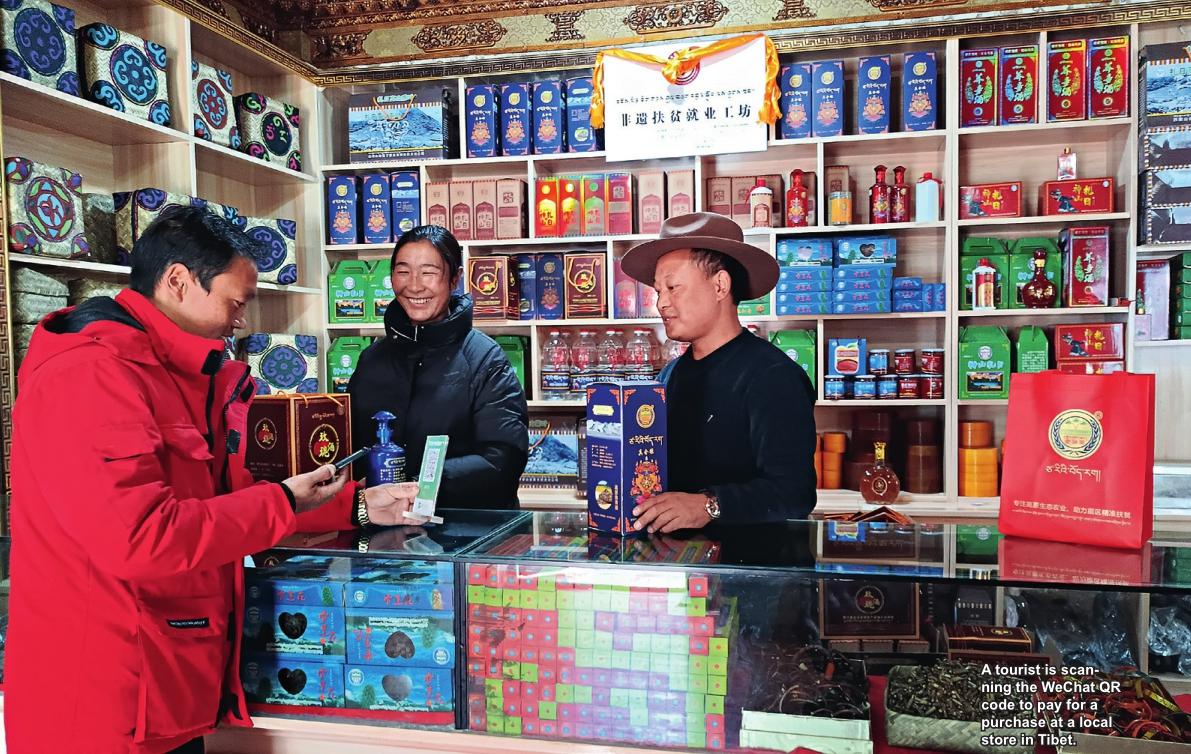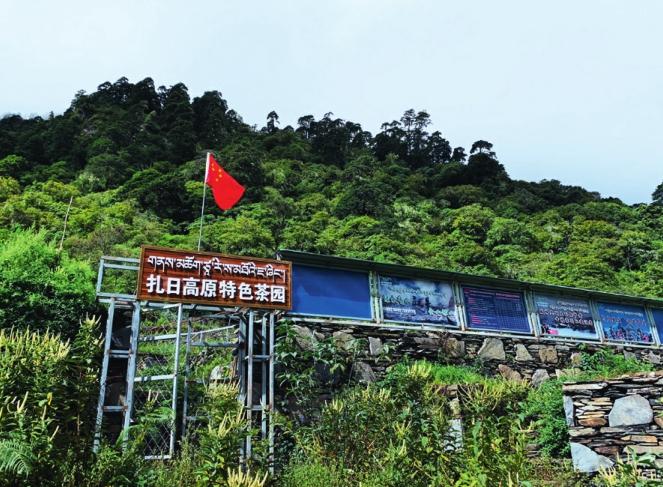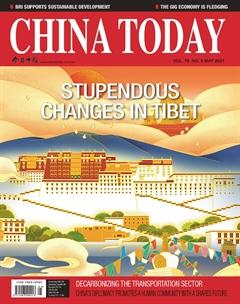Valuable Lessons from Tibet’s Fight Against Poverty
By staff reporter LI YUAN

IN 1951, when Tibet was peacefully liberated, the poverty rate in the region was as high as 80 percent. In the following decades, the Chinese government carried out a comprehensive antipoverty campaign in Tibet, leading to a steady decrease in the number of poor people in the region. The figure fell to 26 percent of local population in 2012, with 600,000 people still living in extreme poverty at that time.
Since 2012, the Chinese government has given top priority to targeted poverty alleviation by constantly exploring innovative approaches. At the end of 2019, the government of Tibet Autonomous Region announced that 628,000 people in 74 counties of the region had been lifted out of poverty, and their per capita net income had increased from RMB 1,499 (US$229) in 2015 to RMB 9,328 (US $1,426) in 2019.
The Tibetan people have now greatly improved their quality of life through the targeted poverty alleviation and eradication practice and vigorously implemented rural revitalization.
From Poverty-Stricken to Well-off
Because of its well-preserved indigenous ecological environment, Zari Township, located in remote Shannan City in southern Tibet, was selected to be part of the first batch of scenic spots promoted for tourism in Tibet. Zari, in spite of rich natural tourism resources, had previously been an extremely impov-erished township that was overlooked by tourists due to its backward infrastructure, rugged roads, shortage of water supply, electricity, and housing.
Goinqog Qoizhoin, a native of Zari, and township head, has witnessed the tremendous changes brought about by poverty alleviation in her hometown. “Now the villagers have moved out of their dilapidated houses to live in the affordable modern housing, and every household has electricity. After an asphalt road was built between the county seat of Lhunze to Zari, the journey that used to take seven or eight hours has been reduced to only three hours,”she said. In 2018, all farmers and herdsmen in Zari rose above poverty through employment in the agricultural sector and aided by state subsidies. Goinqog Qoizhoin led her fellow villagers to grow tea on the Qinghai-Tibet Plateau, with an average elevation of more than 2,700 meters above sea level, and helped them develop traditional industries such as Tibetan liquor, Tibetan incense, and bamboo processing.
“There are already more than 13 hectares of tea plantation in the township. The finished products of the first batch of high mountain ancient tea cultivated in 2020 sold well. In the future, we plan to expand the planting area annually,” said Goinqog Qoizhoin referring to the next phase of rural revitalization.
Tibetan liquor, usually distilled from fermented grains, is poised to harvest impressive economic benefits. According to villager Puncog Doje, a pacesetter of the villages poverty reduction campaign, a rose hip wine developed this year has become popular among young consumers.
“Now Zari is a well-known prosperous border village with beautifully built houses, complete infrastructure and facilities, including a kindergarten and hospital, and the industrial park has started to help local villagers increase their income. This has motivated young people to move back to their hometown to live and work,” said Goinqog Qoizhoin.
Zari has created a model for poverty alleviation efforts in Tibet. In light of the actual conditions, Tibet promotes economic development, carries out ecological relocation, increases support for education, strengthens ecological preservation, and improves social security to meet the peoples basic needs. “The poverty reduction path in Tibet deserves recognition, for it is not only similar to that in other parts of the country, but also involves a lot of innovation and exploration,” said Zhang Yun, a researcher and former director of the Institute of History, China Tibetology Research Center.
Secret to Eradicating Poverty
At the fifth plenary session of its 18th Central Committee, the Communist Party of China (CPC) declared to adhere to the people-centered approach by enhancing peoples well-being and all-round development, and making steady progress toward common prosperity in economic development.
In academic circles, there have been different opinions on issues such as the theoretical basis of and specific measures for poverty alleviation. From a global perspective, the effect of poverty reduction is not satisfactory with slow progress. In 2015, CPC General Secretary Xi Jinping put forward the concept of targeted poverty alleviation at the Central Poverty Alleviation and Development Work Conference, saying, “We must adhere to targeted poverty reduction and poverty alleviation.” He also proposed the “six precise measures,” which refer to identifying the poor,accurate project arrangements, proper use of funds, household-targeted measures, precise stationing of poverty-relief officials in villages, and the measurable effects of poverty relief.
Zari spans an area of 578 square kilometers, and is home to 593 permanent residents. In the early stage of poverty alleviation, Goinqog Qoizhoin led the township officials to visit all households of permanent residents to accurately identify the real poor. The local government crafted tailor-made programs to help families rise out of poverty based on this investigation and more research.
“We analyze the causes of poverty of each poor household, labor conditions, possible ways to increase income, etc., and discuss with the villagers about the villages industry development, determine what kind of cooperatives to develop, and then provide financial support and other assistance accordingly.” In 2020, the per capita annual income of poverty-stricken households in Zari Township exceeded RMB 12,000 (US $1,833).
UN Secretary-General Antonio Guterres spoke highly of Chinas poverty reduction strategy. He pointed out that targeted poverty reduction strategies are the only way to reach those rooted in poverty and achieve the ambitious targets set out in the 2030 Agenda for Sustainable Development.
Tibets poverty reduction efforts are also inseparable from a series of specific measures tailored to local natural environment and economic and social conditions. Located in the heart of the Qinghai-Tibet Plateau, Tibet is an important national security barrier and ecological security barrier, an “Asian water tower,” and a global climate regulator. As the largest contiguous poverty-stricken area in China, Tibet, due to natural and historical factors, lagged behind in the development of infrastructure, education, medical care, and other parts of life. Because of the inherent Buddhist culture, there is not much motivation for pilgrims to rid themselves of poverty and seek prosperity. Therefore, Tibet has formulated concrete measures to adhere to the top priority of ecological protection, improve infrastructure, change peoples mindsets, and support education, while vigorously developing cultural industries, all of which have achieved good results.
Tibet has also continued to innovate theories and practices to build a new mechanism in terms of poverty alleviation. In view of the low level of education of farmers and herdsmen, and their distance from central markets, attention has been paid to the role of village-level organizations and farmerscooperatives.
Pana is a village in the grassland area of northern Tibet. There are 246 households in the village, including 65 poor households. Its villagers rely on herding for their livelihoods and selling surplus livestock products to vendors. Due to the limited pasture area, it was difficult for villagers to expand their herds. Coupled with a rapidly growing population, and meager income from relying solely on traditional animal husbandry, many herder families have fallen into poverty. In 2017, Pana established a livestock production cooperative. The villages pastures and livestock are now intensively operated through shareholding. The labor required for animal husbandry production has been greatly reduced, and many herders can now seek alternative employment. Meanwhile farming is industrialized, dairy products (fresh milk, ghee, and yogurt) processing plants have been set up , and brand marketing is introduced to enhance the value of livestock products.
Zhalo, director of the Institute of Social and Economic Studies at the China Tibetology Research Center, said that since 2016, the Tibet Autonomous Region government has vigorously supported the development of cooperatives. By the end of 2019, a total of 13,726 specialized rural cooperatives had been established, and 165,000 families had joined the cooperatives. The average annual income of the poor was close to RMB 10,000 (US $1528), indicating the success of the method.
China has set the goal of basically achieving modernization in rural Tibet by 2035. Zhalo believes that the development of cooperatives is not only an important experience in Tibets poverty reduction, but an important means to achieve the goal of common prosperity in the future.
Boosting Confidence in International Poverty Reduction
From 2015 to 2019, the per capita disposable income of herdsmen and farmers in Tibet soared from RMB 8,244 (US $1,260) to RMB 12,951 (US $1979) due to the poverty reduction efforts; and the income of the poor increased from RMB 1,499 (US $229) to RMB 9,328 (US $1,425), an increase of 522 percent. Tibet has basically eliminated absolute poverty and the standard of living has improved exponentially.
Tibets success in the fight against extreme poverty is of great significance, not only to Chinas poverty reduction cause, but to the rest of the world. The experience of poverty alleviation and income increase in Damxung County in central Tibet was included into the China Human Development Report 2016 by the United Nations Development Program.
Zhalo said that most other regions of the world with similar natural environment and economic and social conditions as Tibet are deeply impoverished areas, such as the Himalayas, the Andes, the East African Plateau, and the marginal areas where ethnic minorities live. How to improve the welfare of residents in these areas, help them get rid of poverty, and move towards modernization are problems that have long plagued the international community.
Since the Second World War, under the leadership of the institutions such as the World Bank, and the United Nations, developing and developed countries have worked together to make exploration in addressing poverty with great success. However, effective solutions have yet to be found to some deep-seated problems, and the results of international poverty reduction have fallen far short of peoples expectations. Zhalo said that Chinas efforts to eradicate poverty, especially the elimination of absolute poverty in contiguous poverty-stricken areas such as Tibet, have made a significant and direct contribution to the global fight against poverty and greatly boosted peoples confidence.
“Based on the practice of poverty alleviation in Tibet and the rest of China, the value of Chinese wisdom and Chinese solutions to the international community has become increasingly evident. The countries that want to accelerate independent development can learn from Chinas experience in poverty alleviation. In fact, most developing countries expect China to make more contributions to world peace and development, and China is also providing new approaches and new solutions for major global issues,” he said.
- CHINA TODAY的其它文章
- Integration Key to Asia’s Sustained Economic Recovery
- Photography Exhibition on Xinjiang Opens in Beijing
- China to Cultivate National Industrial Parks Specializing in Processing Trade
- President Xi Jinping Attends Video Summit with French,German Leaders
- All Ethnic Groups as One Family
- Konghou:A Surviving and Evolving Musical Aristocrat

